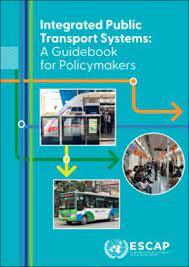
https://www.unescap.org/kp/2024/integrated-public-transport-systems-comp...
Rapid urbanization and population growth have put increasing pressure on existing public transport systems in Asian cities. While growing motorization is the main culprit behind congestion, traffic jams are also exacerbated by the lack of integration of the public transport system. Each transport mode competes for limited road space, while travellers must make inconvenient transfers and navigate the complexities of multiple fare payment systems.
Even when new transit systems are built, transport planners and engineers design them without considering the physical and virtual connectivity between modes. To ensure that passengers are not faced with difficult transfers between modes, it is recommended that public transport systems be planned and operated in an integrated manner. This is achieved by bringing together agencies and transport operators to coordinate planning and operations, integrate their ticketing systems, and provide comprehensive transport information.
The current report, Integrated Public Transport Systems: A Compendium of Good Practices from Asia and the Pacific, presents a selection of good practices of integrated public transport from the region. Readers are encouraged to read this report in conjunction with the publication, Integrated Public Transport Systems: A Guidebook for Policymakers, a guide on how to integrate urban and transport planning and incorporate digital technologies.









